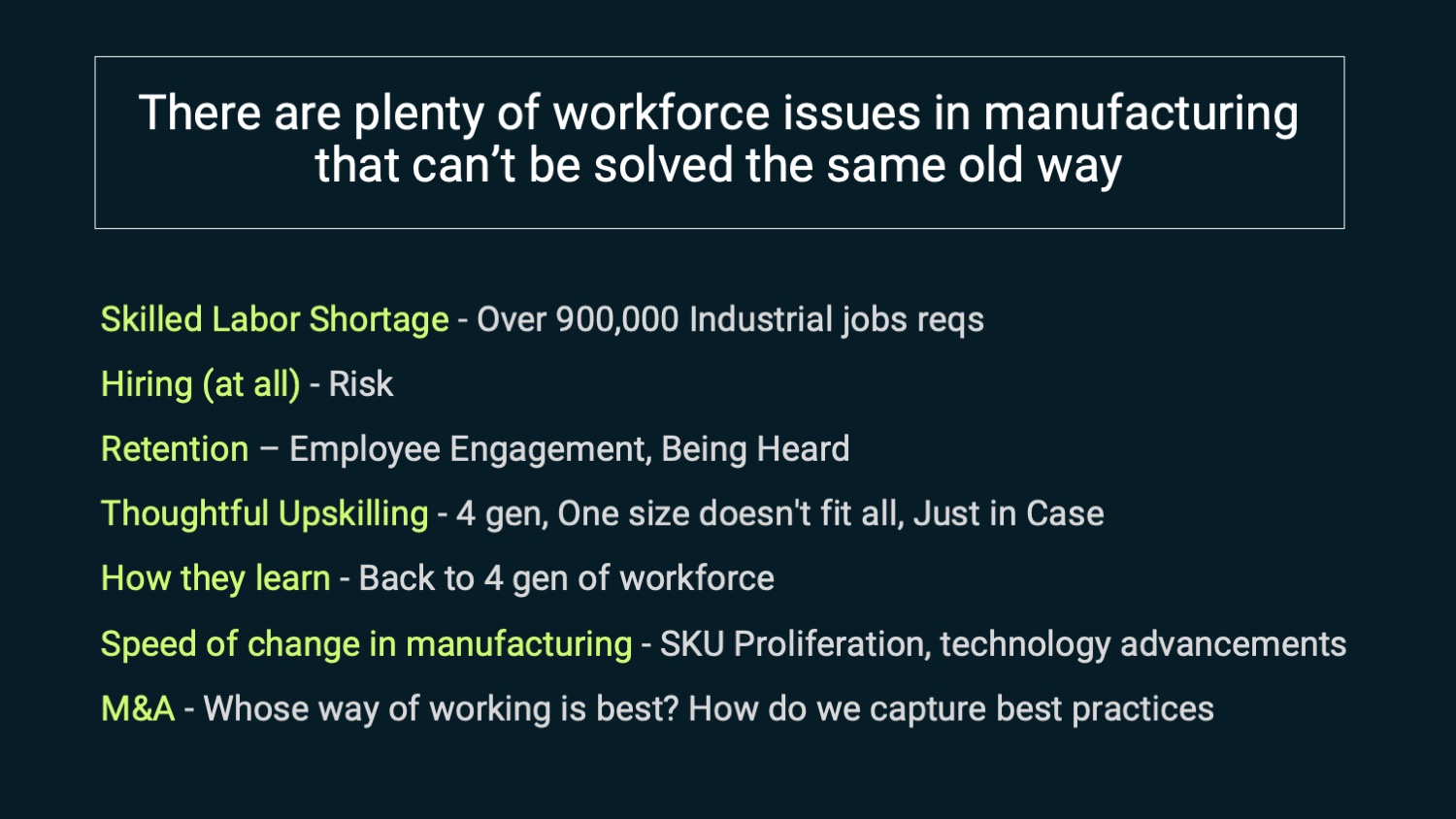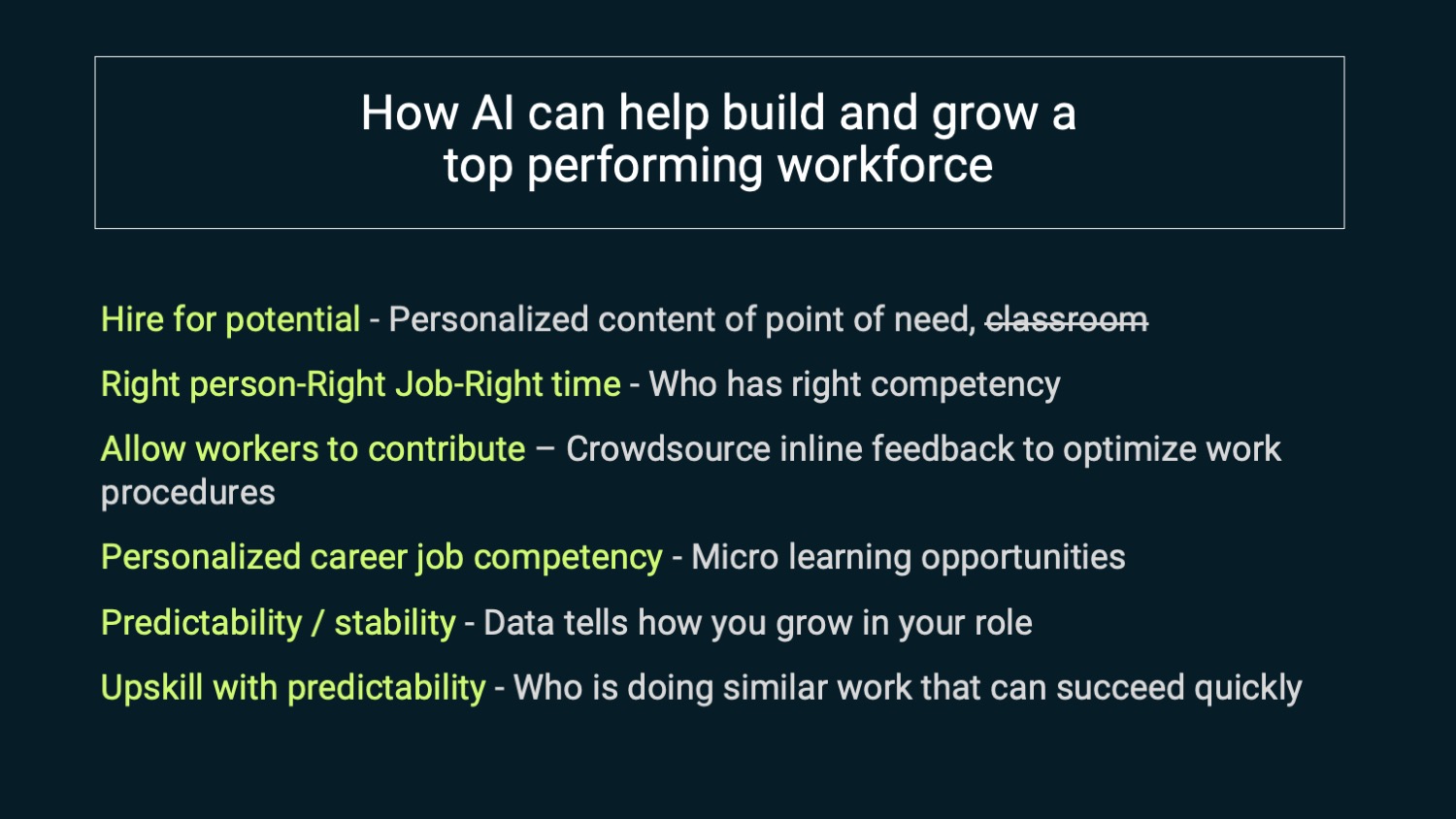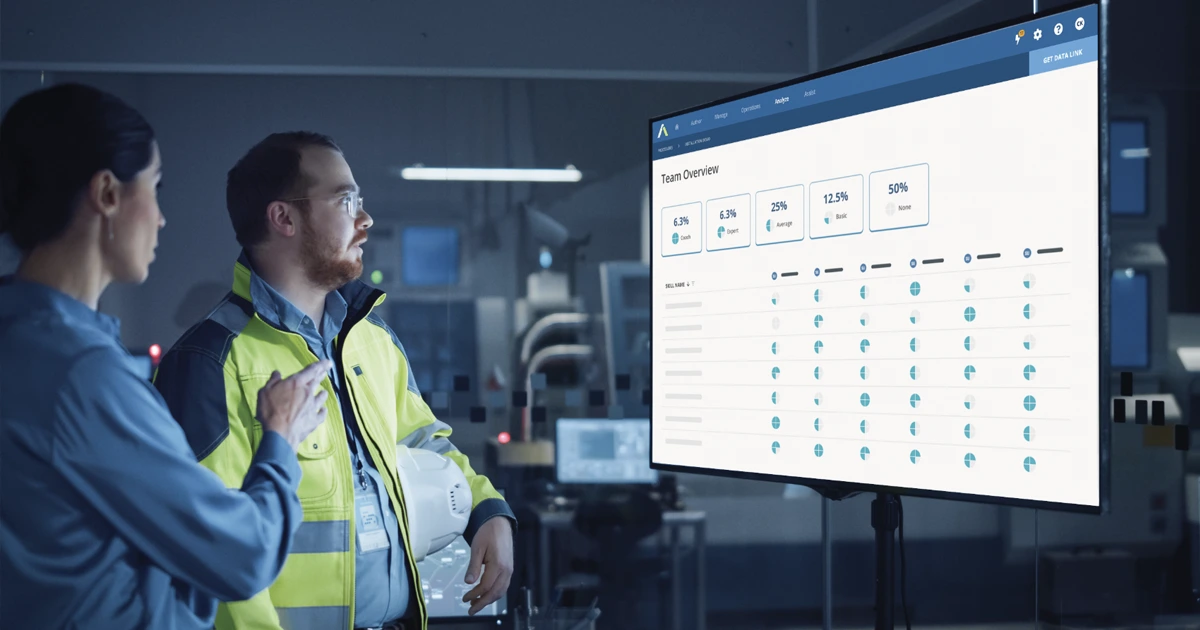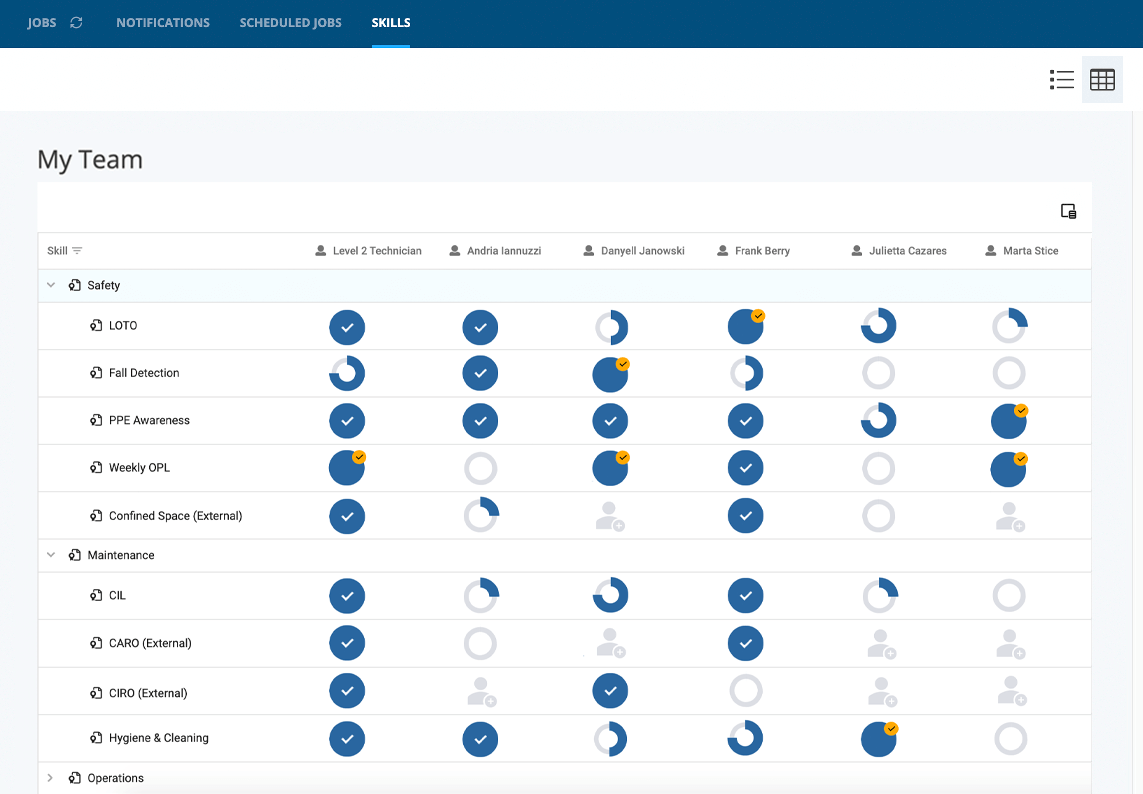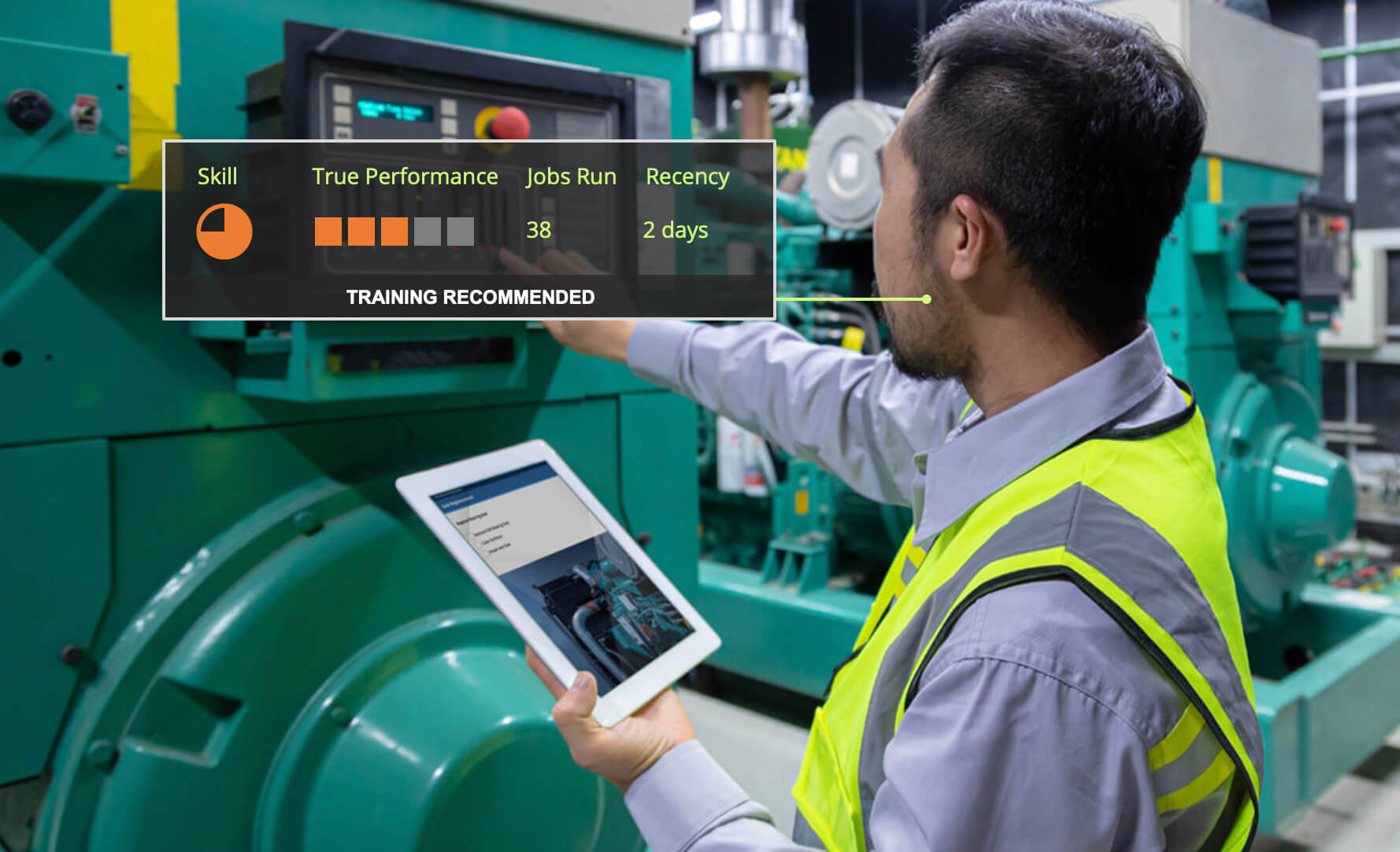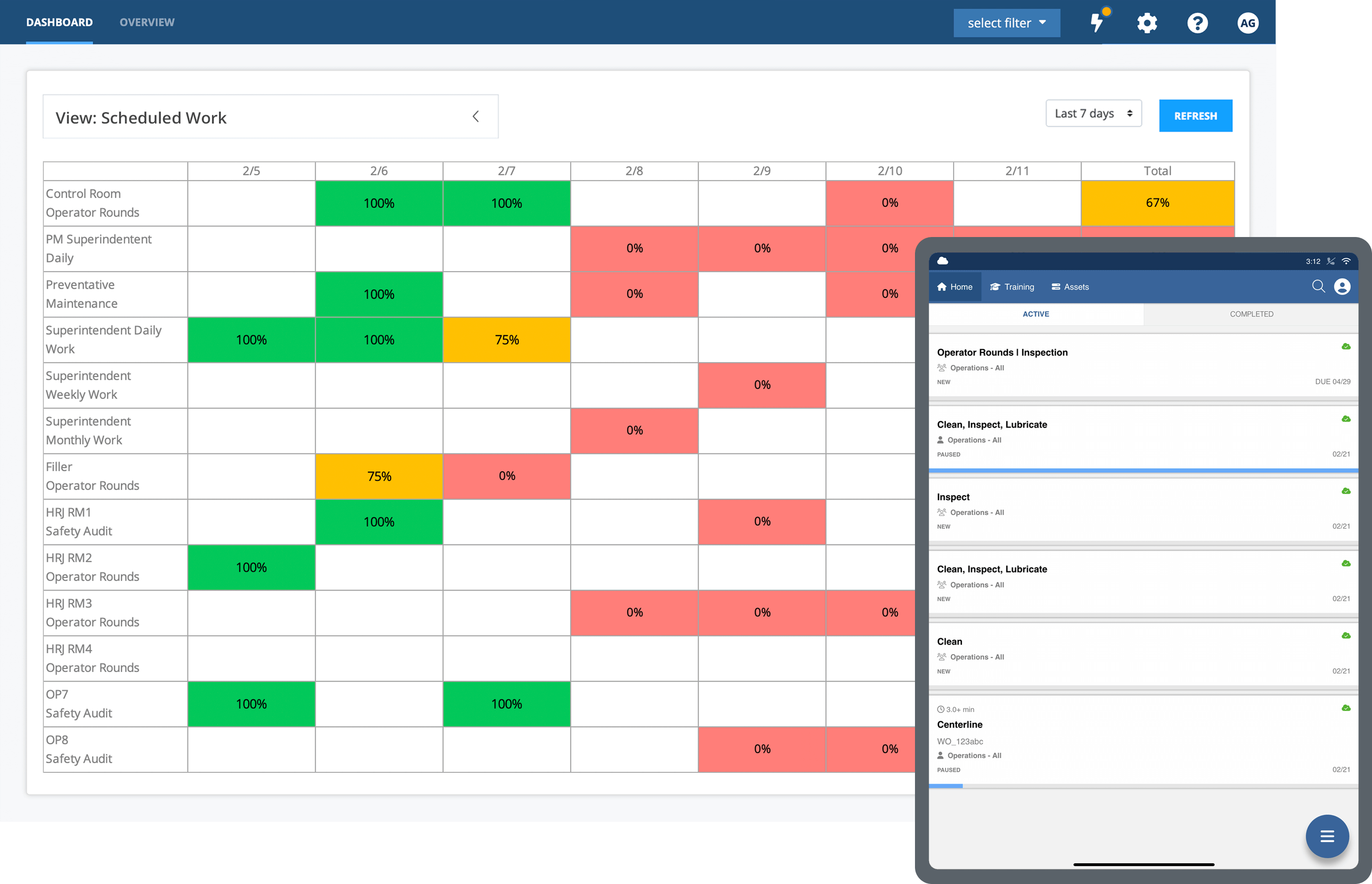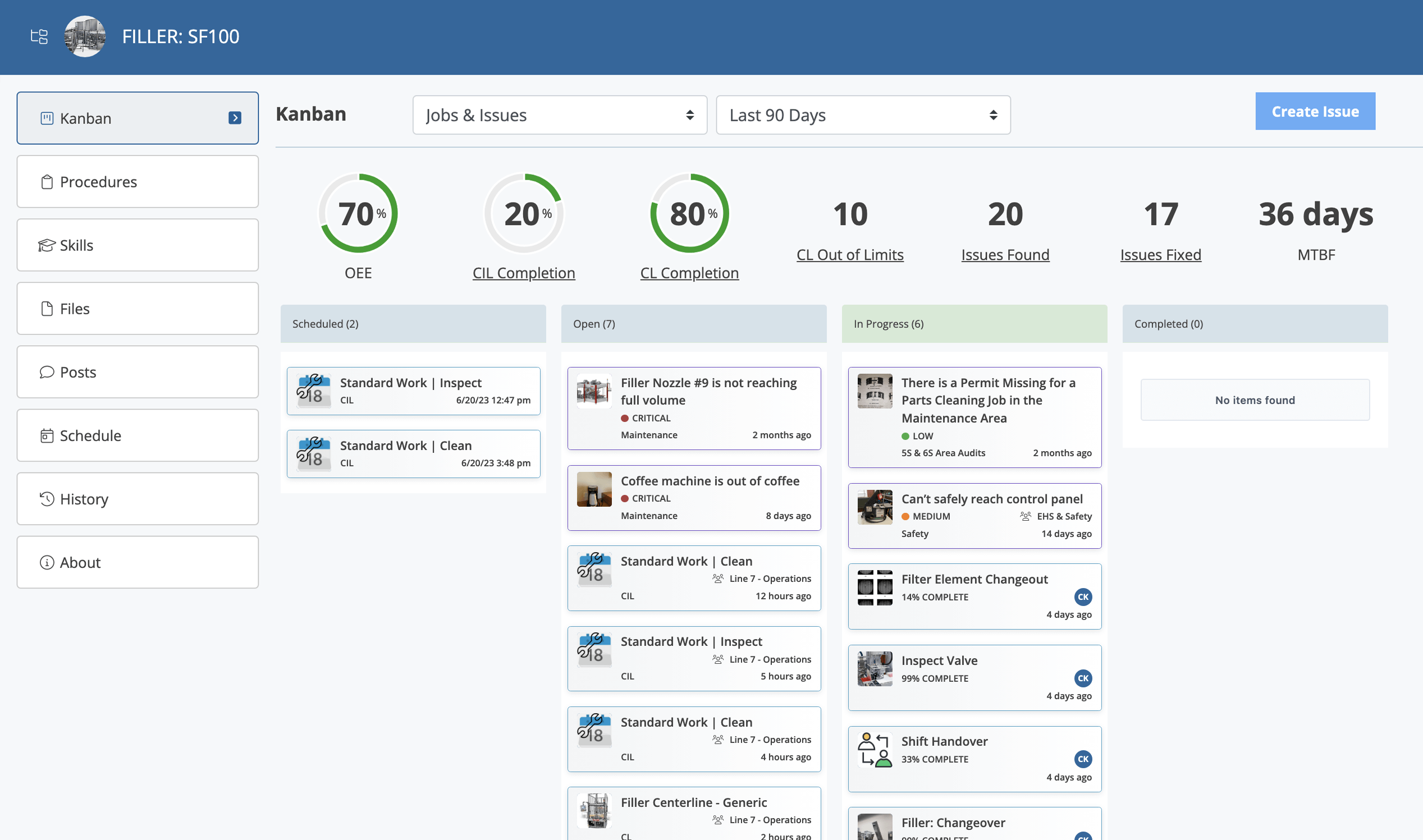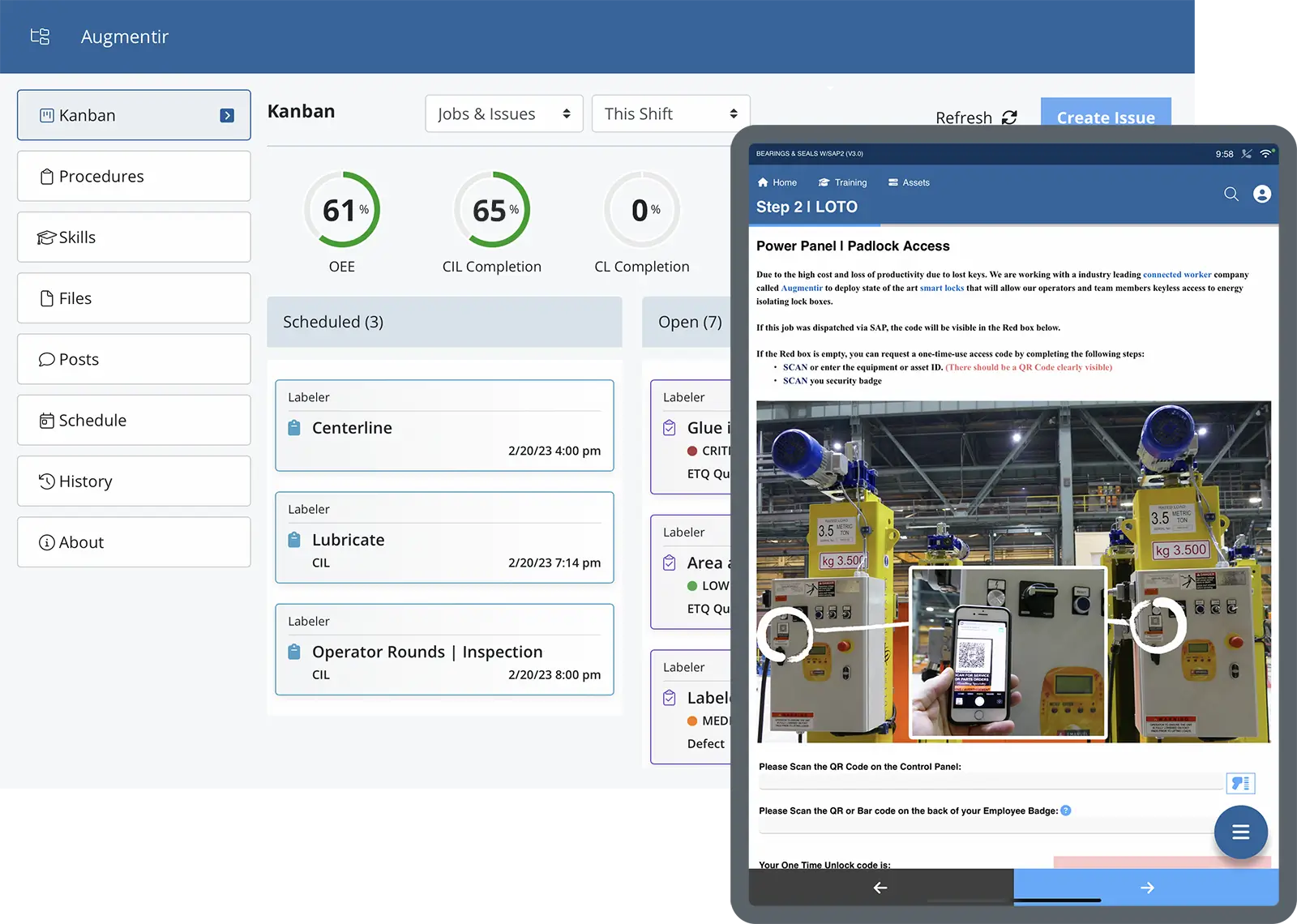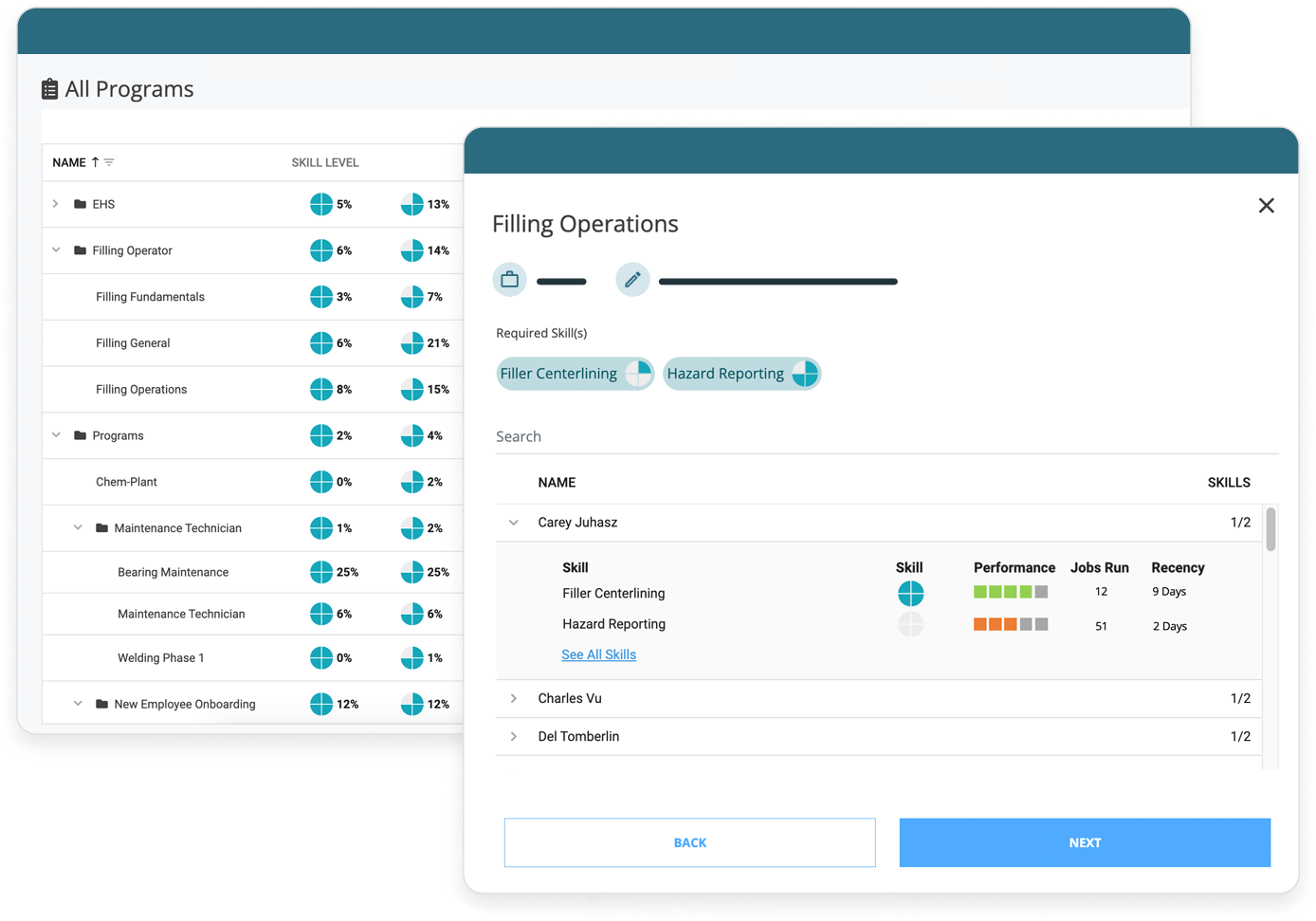Being thankful for AI might not seem like one of the usual items to include on your “What I’m Thankful For” list, but, AI truly has laid the foundation for not only the Augmentir platform, but for transforming the manufacturing workforce in positive ways
Every year as Thanksgiving approaches in the United States, we take time to reflect on what we are thankful for in our personal lives, such as family, friends, and health to name a few. As we started thinking about what we’re thankful for from a work perspective here at Augmentir, many things came to mind: our wonderful clients, an awesome team, our incredible founders, but one item high on our list is something that has allowed us to stand out in the Connected Worker platform space and make our product what it is today – Artificial Intelligence. Specifically AI in manufacturing.
Being thankful for AI might not seem like one of the usual items to include on your “What I’m Thankful For” list, but, AI in manufacturing truly has laid the foundation for not only the Augmentir platform, but for transforming the workforce in positive ways as you’ll see below.
Improved Safety in the Workplace
One of the most common use cases for adopting AI has been in workplace screening and safety primarily as a result of the pandemic. Manufacturers found use in AI to monitor interactions of employees that needed to be in person on the shop floor during the pandemic so that they could conduct contact tracing and facility sanitization if necessary. Seeing the value of AI in workplace safety, manufacturers have continued to implement AI strategies for long-term solutions to identify safety events before they happen or to speed up post-incident root cause analysis for accidents like trips and falls. Industrial companies that implement AI-powered connected worker solutions as part of their digital transformation strategy have seen up to an 80% decrease in reportable injuries.
Connecting the Frontline Worker
According to Cisco, there are over 3 billion workers across the globe, and nearly two-thirds of these workers are frontline or field workers, whose day-to-day duties require that they physically show up to their jobs. Over the years, the manufacturing industry has done a really good job of connecting machines in the fabric of the business and giving operators the necessary data to help run those machines better. Our frontline workers are the least connected set of workers in the company. Frontline workers should be fully integrated into the fabric of the business from a collaboration standpoint so that they have access to the data that they need, when they need it. AI-powered connected worker tools provide not only a path to connect workers, but also intelligently deliver the right level of performance support so they can perform at their best.
Making Sense of Valuable Data
As workers become more connected, companies have access to a new rich source of activity, execution, and tribal data, and with proper AI tools can gain insights into areas where the largest improvement opportunities exist. Artificial Intelligence lays a data-driven foundation for continuous improvement in the areas of productivity, quality, and workforce development, setting the stage to address the needs of a constantly changing workforce. AI algorithms in manufacturing are ideal for analyzing large amounts of data collected from a connected workforce. AI can detect patterns, find outliers, cleanse data and find correlations and patterns that can be used to identify opportunities for improvement and create a data-driven environment that supports continuous learning and performance support. Using AI insights derived from Augmentir’s Connected Worker Platform, Colgate-Palmolive was able to save 10-30 minutes saved per shift and as much as 120 minutes reduced between Maintenance Notification and Maintenance Order Closure (Maintenance Execution Time).
Continuous Learning & Development
The new workforce dynamics and the nature of hybrid work are also now forcing manufacturers to re-think employee onboarding and training. The historic methods of onboarding and training taught workers everything they could “possibly” do which resulted in overtraining. The data-driven era we’re entering into is one of continuous learning and development powered by AI. Training shifts from the things frontline workers are possibly going to do to what they are probably going to do. Implementing AI in manufacturing training results in reduced training times, continuous learning and development, and the ability to upskill at any point as needed. Learning is always available, training content is available on-demand to the worker on the shop floor at the time of need. Reducing the initial onboarding training and allowing training to occur at the moment of need, coupled with AI for scoring, provides insights into the most effective training modules as well as what needs to improve based on demonstrated execution.
At Augmentir we believe that the purpose of a Connected Worker platform isn’t simply to deliver digital work instructions and remote support to a frontline worker, but rather to continually optimize the performance of the connected worker ecosystem. AI is uniquely able to address the fundamental macrotrends of skills variability and the loss of tribal knowledge in the workforce. With an ecosystem of content authors, frontline workers, subject matter experts, operations managers, continuous improvement engineers, and quality specialists, there are dozens of opportunities to improve performance – and that’s something to be thankful for.
To learn more about how AI is being used to digitize and modernize manufacturing operations, check out our latest eBook – Build a Modern, Connected Workforce with AI.

